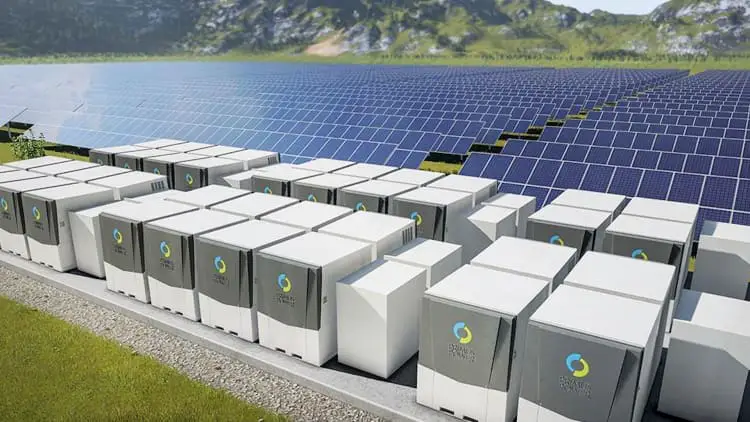Solar batteries come in various types, each with its own set of characteristics, advantages, and limitations. Lithium-ion batteries stand at the forefront of energy storage technology, powering everything from mobile devices to electric vehicles, and are increasingly popular in solar energy systems.
These solar batteries are made up of one or more cells that store energy, along with a special circuit to keep them safe. We call it a battery when these cells and the circuit are put together in a device.
They are prized for their high energy density, meaning they can store a significant amount of energy in a relatively small and light package.
Additionally, lithium-ion batteries have a longer lifespan and a higher depth of discharge compared to traditional lead-acid batteries.
Why Choose Lithium-ion Battery for Energy Storage Solution?
The introduction of lithium solar batteries, particularly with the launch of Tesla’s Powerwall, marked a significant evolution in energy storage technology, especially for residential solar systems.
Here’s an overview of how lithium-ion batteries have impacted the solar energy storage landscape:
- Energy Density: Lithium-ion batteries have a higher energy density compared to traditional lead-acid batteries. This means they can store more energy in a smaller space, which is a huge advantage for residential installations where space can be a constraint.
- Efficiency: Lithium batteries are more efficient in both charging and discharging. This efficiency translates to a better return on energy produced by solar panels, as less energy is lost in the storage and retrieval process.
- Longevity: They typically offer a significantly longer lifespan and greater cycle life than lead-acid batteries. This reduces the need for frequent replacements, which can make them more cost-effective over the long term despite the higher initial investment.
- Maintenance: Lithium-ion batteries require much less maintenance than lead-acid batteries, saving time and further costs. They do not need the regular watering, equalization charges, or ventilation that lead-acid batteries require.
- Depth of Discharge: Lithium batteries can be discharged more deeply without suffering from the “memory effect” or a significant reduction in lifespan. This allows for a greater usable capacity without harming the battery’s longevity.
- Cost: Initially, the cost of lithium-ion batteries was a barrier. However, with the widespread adoption and mass production, prices have been steadily decreasing, making them increasingly affordable for average homeowners.
- Market Growth: The success of products like the Tesla Powerwall has attracted substantial investments into the energy storage sector, leading to more research, development, and a variety of products available for consumers.
Advantages and Disadvantages of Lithium-ion Batteries
Lithium-ion batteries charge faster and last longer before needing a recharge compared to older rechargeable batteries like nickel-cadmium or nickel-metal hydride.
They can hold more power, don’t suffer from memory effects (which can reduce battery life), and barely lose any charge when they’re not being used.
However, they do have some downsides.
They need built-in protection to stop them from being overcharged or getting too hot, which can be dangerous.
Also, even though they’ve gotten cheaper over time, they still cost about 40% more to make than nickel-cadmium batteries.
Applications of Lithium-ion Batteries
Lithium-ion batteries are becoming more affordable and are used in many different ways:
- Emergency Power: They are key in UPS systems, which keep servers running when the power fails.
- Solar Energy Storage: They’re great for solar power because they charge quickly and work well for people generating their own electricity.
- Consumer Electronics: They’ve allowed phones and other devices to become smaller and more powerful.
- Aid for Disabled Individuals: They power devices like electric wheelchairs, making everyday tasks easier for those with mobility challenges.
- Electric Vehicles: They’re a big reason why electric cars are becoming more common. They store a lot of energy without taking up much space, which helps make electric cars more affordable and able to travel long distances on a charge, often at a lower cost than gas-powered cars.








